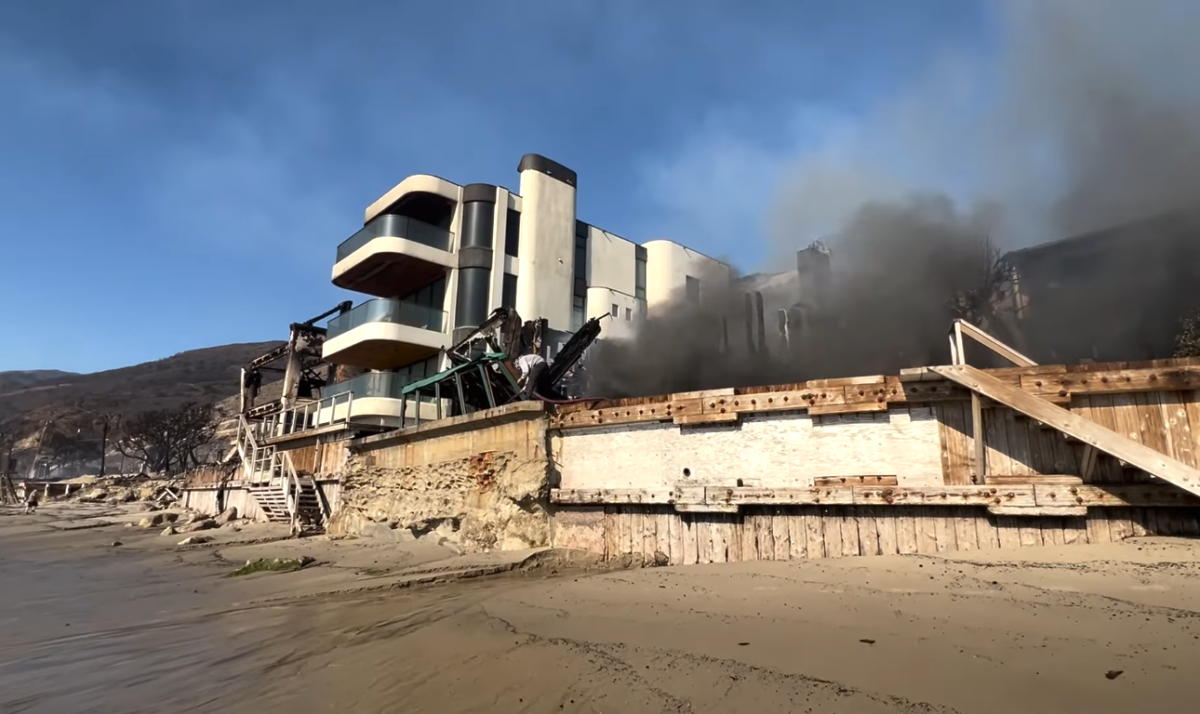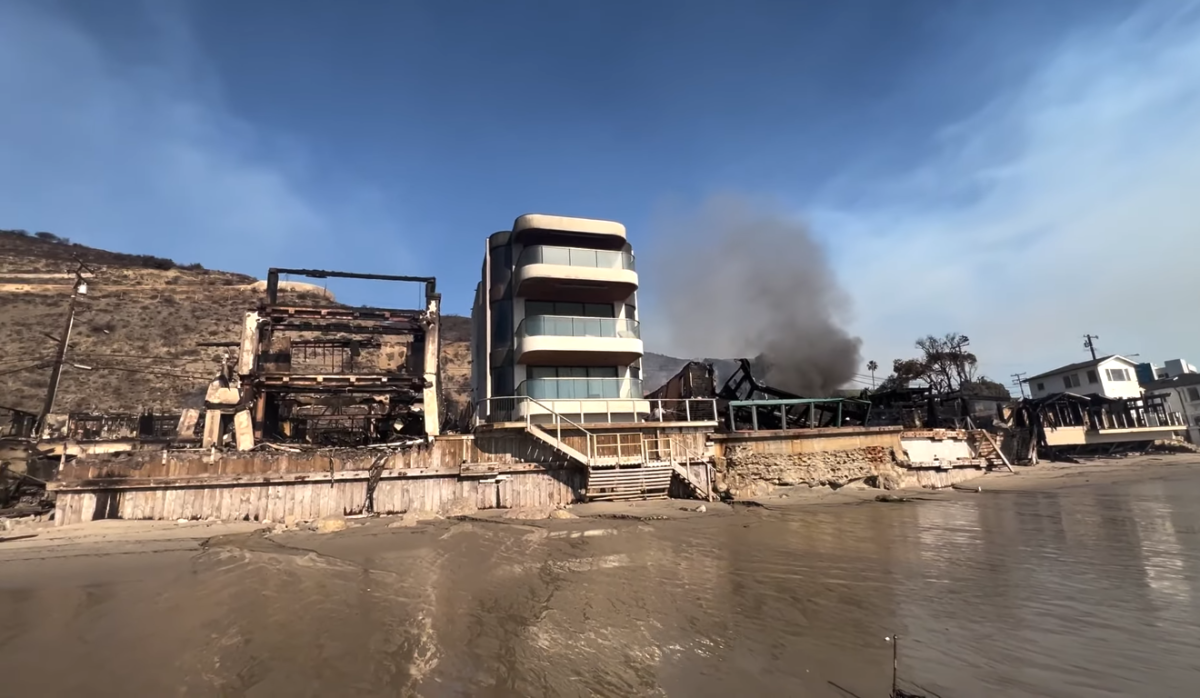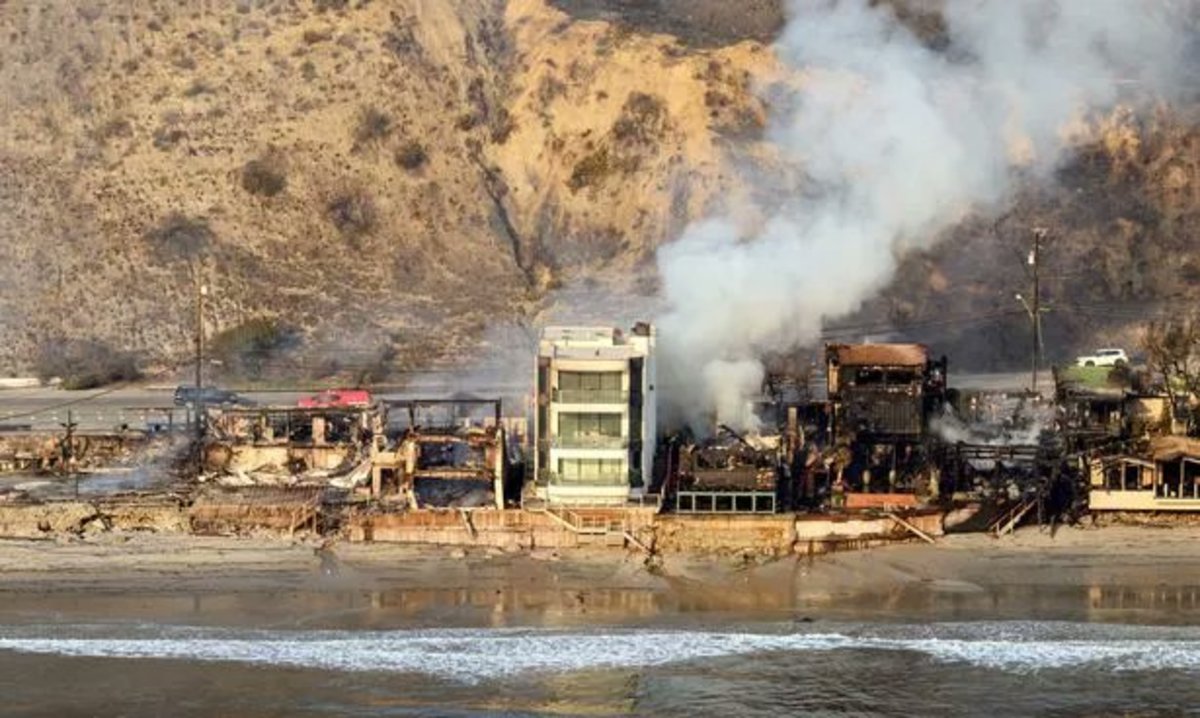As wildfires ravage Southern California, leaving a path of destruction in their wake, a few Malibu mansions stand as improbable survivors amid the ashes. The Los Angeles fires are shaping up to be among the most catastrophic in U.S. history, with damages estimated between $250 billion and $275 billion, according to AccuWeather. Cal Fire reports that the infernos have claimed at least 24 lives, burned over 40,000 acres, and destroyed more than 12,000 structures. Yet, some homes remain unscathed—a testament to meticulous planning, innovative design, and perhaps a stroke of luck.
One striking example is Waste Management CEO David Steiner’s Malibu mansion. Surrounded by blackened ruins on all sides, his three-story contemporary home emerged unscathed. “I wouldn’t call it a miracle,” Steiner remarked. “It’s great architecture, brave firefighters, and maybe a bit of luck.”
Steiner credits the survival of his home to its concrete construction. Experts agree that building materials play a critical role in wildfire resistance. Fire safety professional Daniel Vasilevski explains, “Structures made with materials like stucco, metal, and stone, coupled with fire-resistant roofs, have a much better chance of withstanding flames.” Double-glazed windows and sealed gaps further prevent embers from infiltrating a home and igniting it from within.

A Matter of Strategy and Location
Wildfires don’t just target homes at random; environmental factors such as wind patterns, vegetation, and terrain can dictate a structure’s fate. Fire investigator Wayne Whitney emphasized that maintaining a defensible space around a home is vital. “The materials a house is built from, its upkeep, and the management of surrounding vegetation are all crucial,” he said.
Actor Tom Hanks’ $26 million Pacific Palisades estate also survived the inferno, despite flames ravaging nearby properties. Reinforced with concrete and a fire-resistant roof, the home benefits from minimal surrounding foliage. Aerial photos reveal a clear perimeter around the mansion, which may have acted as a natural barrier against advancing flames.

Engineering for Survival
Steiner’s mansion offers another lesson in disaster preparedness: its foundation is anchored 50 feet into bedrock, a feature primarily designed for earthquake resistance. “Deep foundations like these also protect homes from heat-induced shifting or cracking,” Vasilevski explained.
When Luck Plays a Role
Even with all the preparation in the world, sometimes survival comes down to sheer chance. Wind shifts, natural barriers, or embers falling just inches away can make all the difference.

For residents like journalist Alisa Wolfson, whose home was destroyed while neighboring properties remained intact, the randomness is both heartbreaking and baffling. “Luck is a factor we can’t control,” fire safety expert Jessica Lauren admitted.
As California rebuilds, these survival stories underscore the importance of preparation, innovation, and respect for the unpredictable nature of wildfires.
Sources: New York Post
